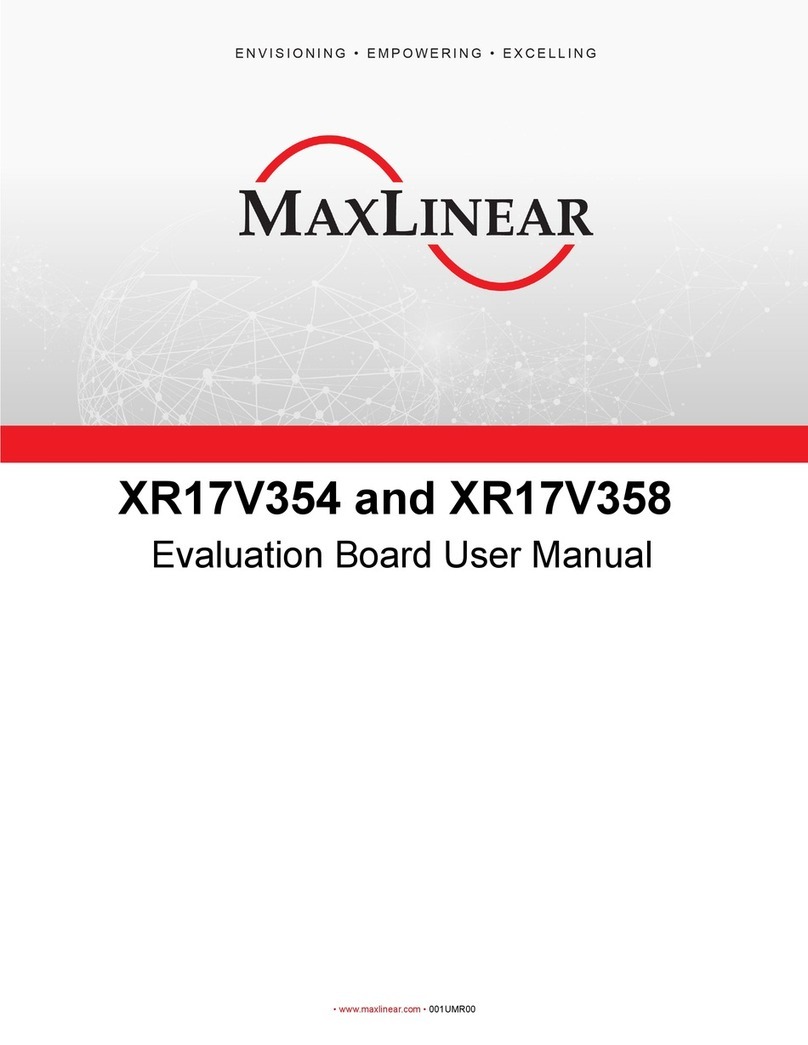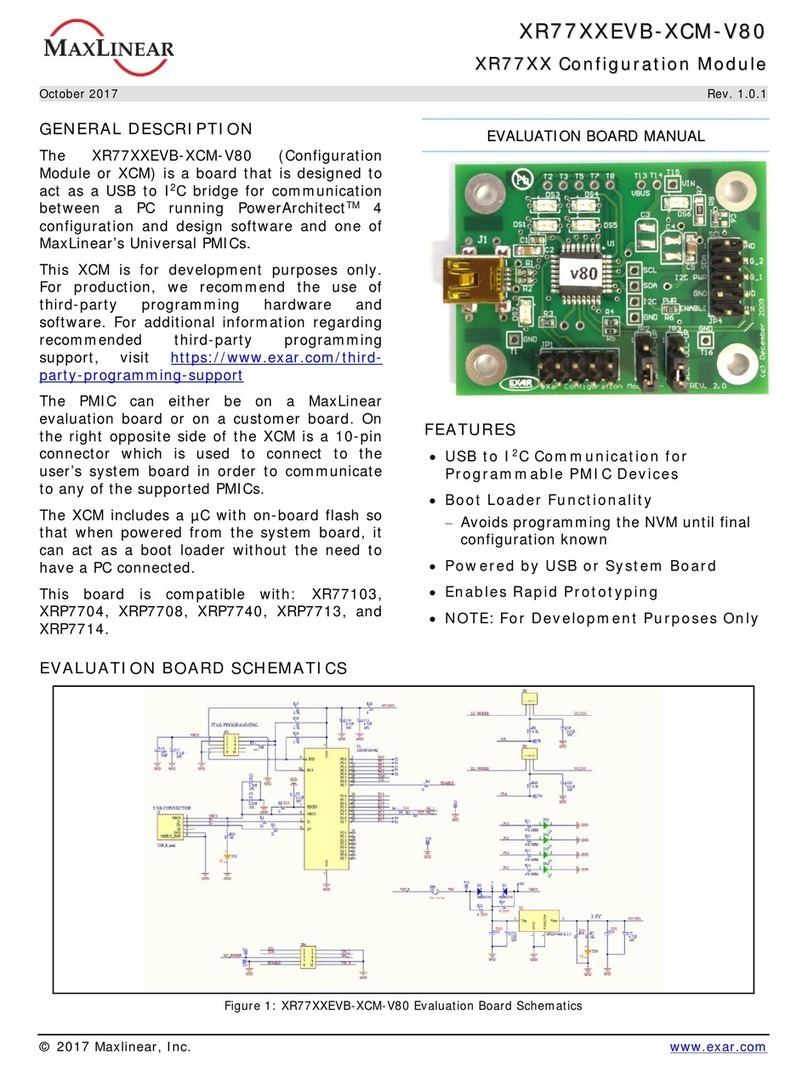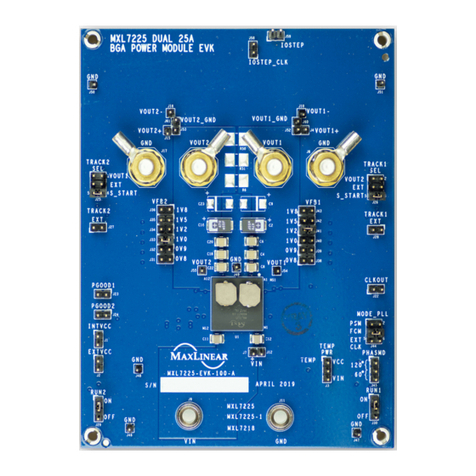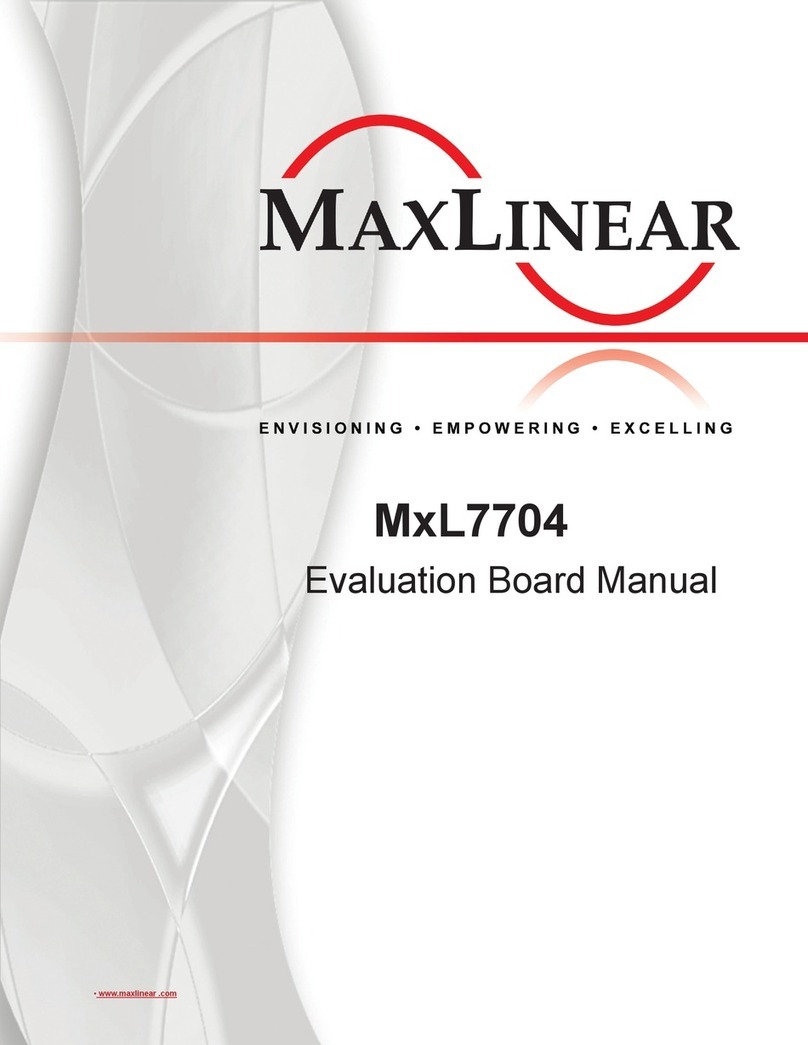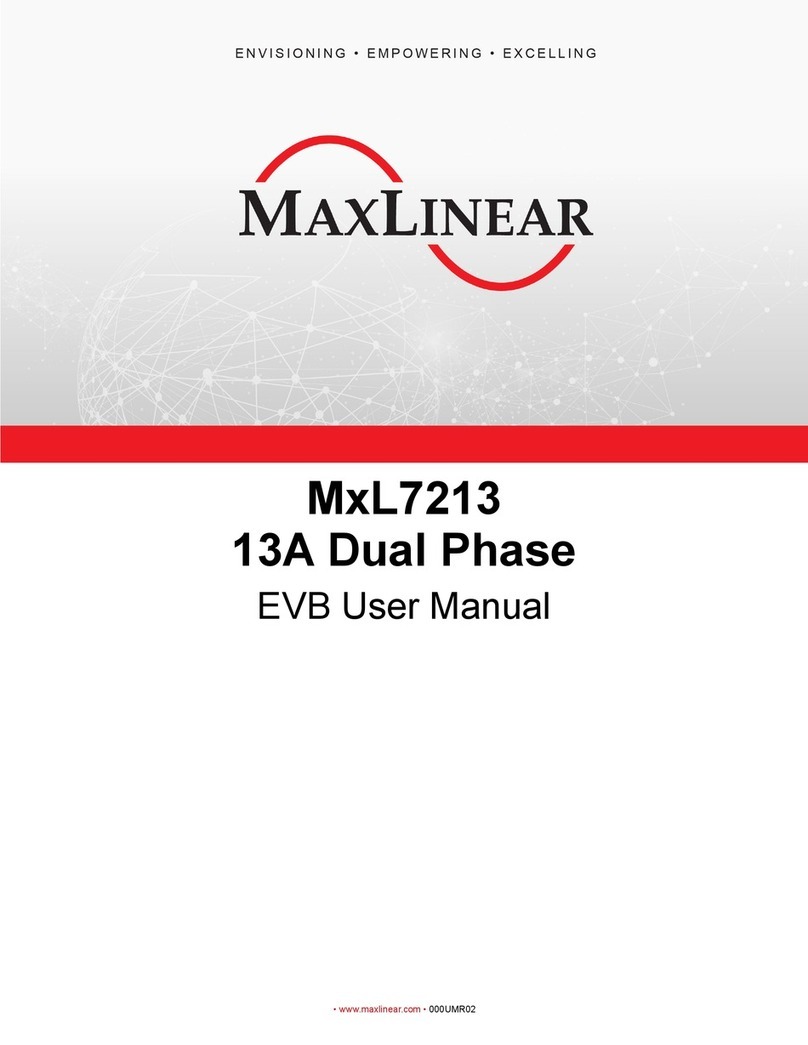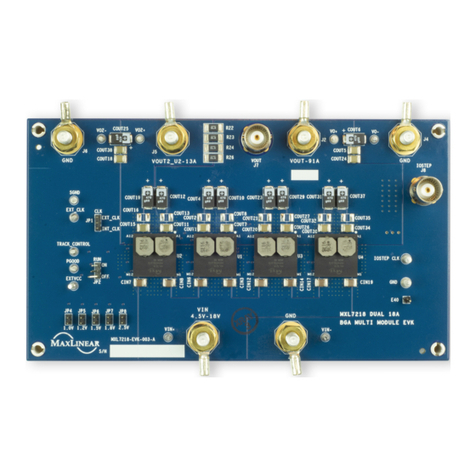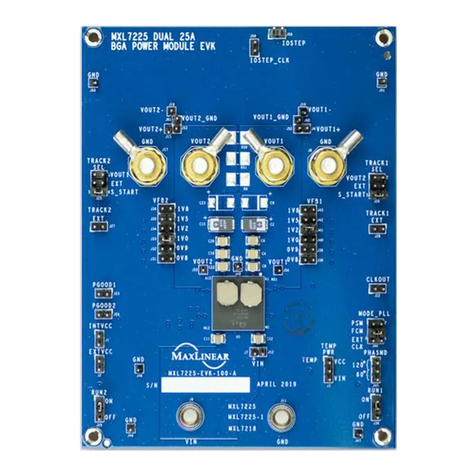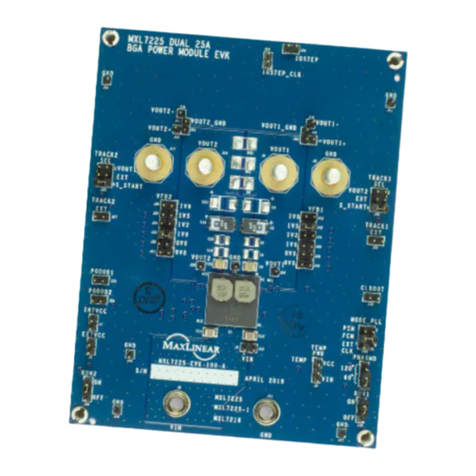
XR32220 Evaluation Board User’s Manual
2/6
Hardware / System Setup
Jumpers are factory installed per Table 1. Jumper and
testing options are described in the next section.
Header Factory Setting Description
J2 Jumper 1-2 Connects VL to VCC
Table 1: Factory Settings
Connect J43 and J45 per Table 2 to configure the EVB for
normal mode operation.
Header Configuration Description
J43 Jumper 2-3 Shutdown = 1 enables normal mode
J45 Jumper 2-3 Online = 1 enables normal mode
Table 2: Normal Mode Configuration
Connect the RS232 drivers and receivers, TTL/CMOS
Driver Inputs and Receiver Outputs per Table 3 and power
and ground per Table 4 for immediate evaluation of the
XR32220 functionality and performance.
Header Connection Pin
J9 RS232 receiver input R1IN
J11 RS232 receiver input R2IN
J19 RS232 driver output T1OUT
J21 RS232 driver output T2OUT
J29 TTL / CMOS driver input T1IN
J27 TTL / CMOS driver input T2IN
J39 TTL / CMOS receiver output R1OUT
J37 TTL / CMOS receiver output R2OUT
Table 3: Input and Output Connections
J1 J1-1 J1-2 J1-3 J1-4
Name GND NC VCC VCC
NOTE:
1. VCC = 3.0V to 5.5V
Table 4: Power and Ground Connections
Pin J1-1 is the ground connection to the XR32220
evaluation board and is a common ground connection to the
entire board. An external 3.3V ±10% or 5.0V ±10% supply,
referenced to J1 pin 1 ground, should be connect to J1 pins
3 & 4.
Use probes summarized in Table 5 to observe operation at
various points. TP1 and TP2 provide GND for probes at 2
different spots.
Header Probe Points
J3, J4, J5, J7 C3, C4, C2 and C1 charge pump capacitors
J6 VCC into XR32220 transceiver
J42 Status output
Table 5: Monitoring Probes
Jumper and Testing Options
TTL / CMOS Logic Supply, VL - J2
The XR32220 has a separate logic supply pin, VL, which
controls the logic levels for the following pins: T1IN, T2IN,
R1OUT, R2OUT, Shutdown, Online and Status.
With a jumper placed across J2 the logic supply is tied to
VCC. To drive the VL logic supply to a lower voltage than
VCC, simply remove the jumper across J2 and connect
the separate external logic supply to pin 2 of J2. The logic
supply voltage, VL, must always be less than or equal to
VCC.
Power LED - J12
Connect Jumper J12 1-2 to illuminate the D1 LED when
power is connected if desired.
RS232 Receiver Inputs - J9 and J11 (J8 and J10)
Pin 2 on both the J9 and J11 connectors is the RS232
receiver input and pin 1 is ground. There is a 3 pin jumper
next to each of the test points, J8 and J10, to allow the
receiver inputs to be tied to VCC or ground if desired.
Normally the RS232 signal is applied to Pin 2 of J9 and J11
and J8 and J10 are unused.
RS232 Driver Outputs - J19 and J21 (J18 and J20)
Pin 2 on both the J19 and J21 connectors is the RS232
driver output and pin 1 is ground. There is a 2 pin jumper
next to each of these test points, J18 and J20, to allow for
any external loads to be applied if desired.
TTL/CMOS Driver Inputs - J27 and J29 (J26 and J28)
Pin 2 on both the J27 and J29 connectors is the TTL/CMOS
driver input and pin 1 is ground. There is a 3 pin jumper
next to each of the test points, J28 and J26 to allow the
driver inputs to be tied to VL or ground if desired. Normally
the signal generator would be applied to Pin 2 of J29 and/or
J27 and J28 and J26 would not be used.
TTL/CMOS Receiver Outputs - J37 and J39 (J36 and J38)
Pin 2 on both connectors is the TTL/CMOS receiver output
and pin 1 is ground. There is a 2 pin jumper next to each
of these test points, J38 and J36, to allow for any external
loads to be applied if desired.
